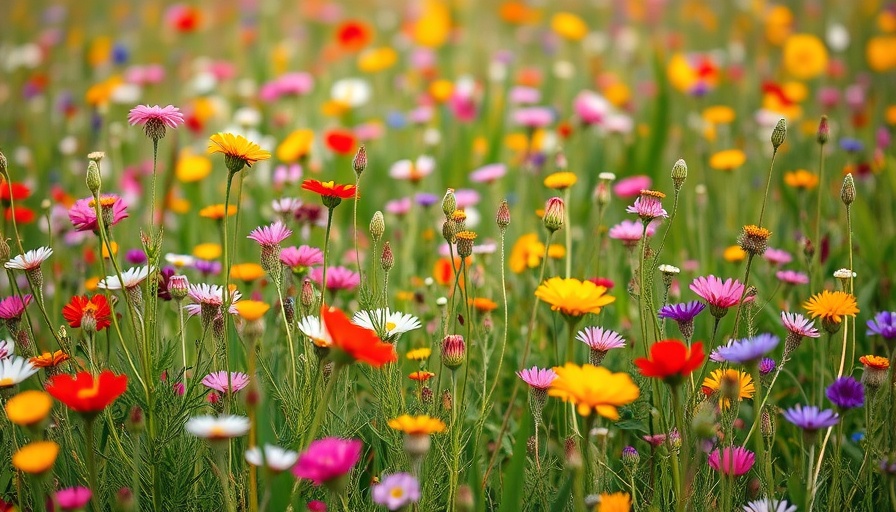
Why Wildflowers Matter: A Heartfelt Connection
The vibrant tapestry of wildflowers in North Texas serves not only to beautify our surroundings but also plays a critical role in the ecological balance of the region. These flowering plants support a bustling ecosystem filled with pollinators like butterflies and bees, which are essential for cultivating fruits and vegetables. In a time when urban development often encroaches on nature, planting wildflowers can become an act of rebellion against environmental decay, marking your yard as a sanctuary for wildlife and a rich habitat for essential pollinators.
Ecological Benefits of Wildflowers: Enhancing Our Ecosystem
Wildflowers are heroes of biodiversity; their diverse blooms become a life source for pollinators. This symbiotic relationship boosts the local flora that we often rely on for sustainable living. Each flower becomes a tiny ecosystem, fostering the reproduction of plants that provide food for both humans and wildlife. The deeper root systems of native wildflowers contribute significantly to soil health by preventing erosion and enriching the soil with nutrients, thus reducing our reliance on chemical fertilizers.
Practical Wins: Low Maintenance and Sustainable
Another beauty of wildflowers is their low maintenance nature. Once established, they require significantly less water, mowing, and care compared to traditional lawns. This resilience makes them particularly beneficial to the Fort Worth community, where water conservation is increasingly essential. They draw from the local soil and weather, meaning they thrive in our specific climatic conditions.
Protecting Water Quality: Nature's Filtering System
Wildflowers naturally filter runoff water, preventing harmful pollutants from reaching our lakes and rivers, which plays a vital role in protecting aquatic ecosystems. This reciprocal relationship further highlights the importance of planting native species. By choosing to implement wildflowers in your landscape, you participate in an effective, natural filtration system that maintains the health of water bodies across North Texas.
Planting Tips: Your Guide to Creating a Wildflower Haven
To maximize the benefits of your yard transformation, select wildflower species native to North Texas. Not only do these plants promise better resilience and lower maintenance costs, but they also bolster the local wildlife population. The best time to plant is in the fall, when the cooler temperatures promote seed germination and growth. Selecting the right time and type increases your chances of success in creating a colorful, sustainable garden.
A Sustainable Choice for the Community
Planting wildflowers is more than just an aesthetic choice; it’s a commitment to sustainability. Every seed sown contributes to the rich tapestry of biodiversity, enhances soil, air, and water quality, and supports wildlife. For Fort Worth residents, engaging in this simple activity can help foster community pride, enrich our neighborhoods, and partake in the shared goal of preserving our beautiful Texas landscape.
Your Role in Fort Worth's Floral Future
As individuals and families in Fort Worth, we possess the power to instigate change in our community one garden at a time. Wildflowers can transform mundane spaces into vibrant ecosystems while creating educational opportunities for children and deeper connections between neighbors sharing the same interests in nurturing their environment. Let's inspire each other to take action and enrich our community with native wildflowers, ensuring a beautiful and thriving Fort Worth for generations to come.
 Add Row
Add Row  Add
Add 




Write A Comment